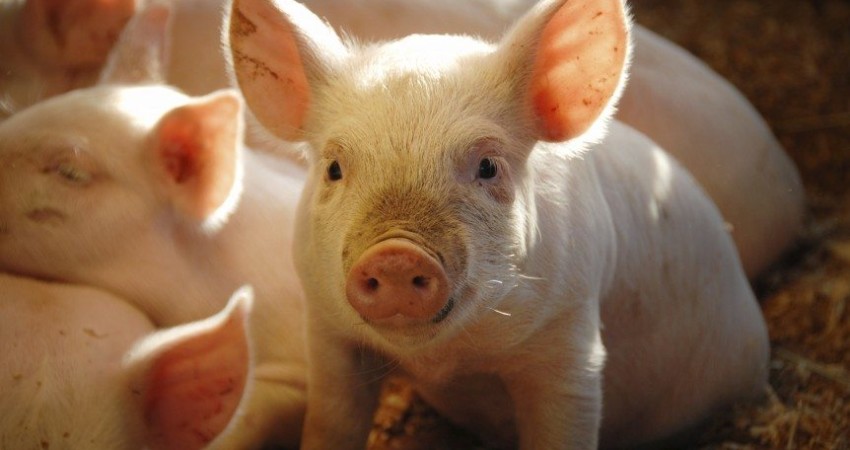

Soundness
The desirable breeding stock must be structurally sound. They need a sloping shoulder, forearm, and pastern to serve as front shock absorbers. Also, a level rump, high tail setting, and hock angulation. There also must be a spring or flexion (proper set to hock joint) for rear leg soundness. Additionally, a level top, moderate length of neck, and large, even-sized toes aid structural soundness. Breeding swine need to move soundly and freely on pasture, or in confinement. Sows must be able to get up and down in farrowing crates. Boars must be sound to service sows.
Growth Rate
Fast growing breeding stock is a must. Since hogs that grow fast are usually more efficient (less feed per pound of gain), the growth rate is very important. Records such as days to 230 pound or daily gain on tests are tools used to measure growth rate. Do not be misled into thinking you can measure growth rate by visual appraisal alone. Good performance comes in varied types of hogs so if growth records are available, use them. If records are not available, select breeding stocks that are large for their age, moderate in frame size, and adequate in depth and capacity.
Muscle
Furthermore, desirable muscle type and pattern have changed over the years. Extremely thick, bunchy-muscled pigs were once selected. While these hogs produced lean and heavy muscled carcasses, their productivity (litter size, farrowing ease, soundness, mating ability, pork quality, lack of stress, and maturity pattern) was not so desirable. Modern producers now select breeding stock that is longer and flatter-muscled with a bigger skeleton. However, muscle is still our saleable product and thickness of muscle is important. Ideally, we want the greatest amount of total muscle mass (length, depth, and thickness) possible without interfering with overall productivity.
Trimness
Since fat is neither economical to produce nor trim off the carcass, the selection of lean breeding stock is important. Boars and gilts should be clean over their loin edge; their shoulder blades should be easily seen, and they should be free from the excessive waste in the cushion of their hams. Backfat probes and ultrasonic instruments are useful tools in determining fat.
Underlines
Check underlines for both teat quality and number. Desirable nipples are long, narrow, and well defined. Problems such as poor spacing, blind, and inverted teats should be avoided.
Reproductive Efficiency
The heritability (that which is passed from one generation to the next) of reproductive traits is low. However, the number of pigs born, number farrowed alive, birth weight, and 21-day litter weight is so important to profitable swine production they must be considered in selection. Select boars and gilts from large (8 or more weaned), healthy, problem-free litters.
Also, behavioural patterns are important in selecting reproductive efficiency. You should select breeding stock sired by sexually aggressive, masculine boars, and raised by gentle, easy farrowing, docile sows with mothering ability.
The success of a swine breeding project is due to both genetics and environment. In other words, high performing hogs and good management and husbandry practices are needed for production.
 Contact Jaguza Support
Contact Jaguza Support